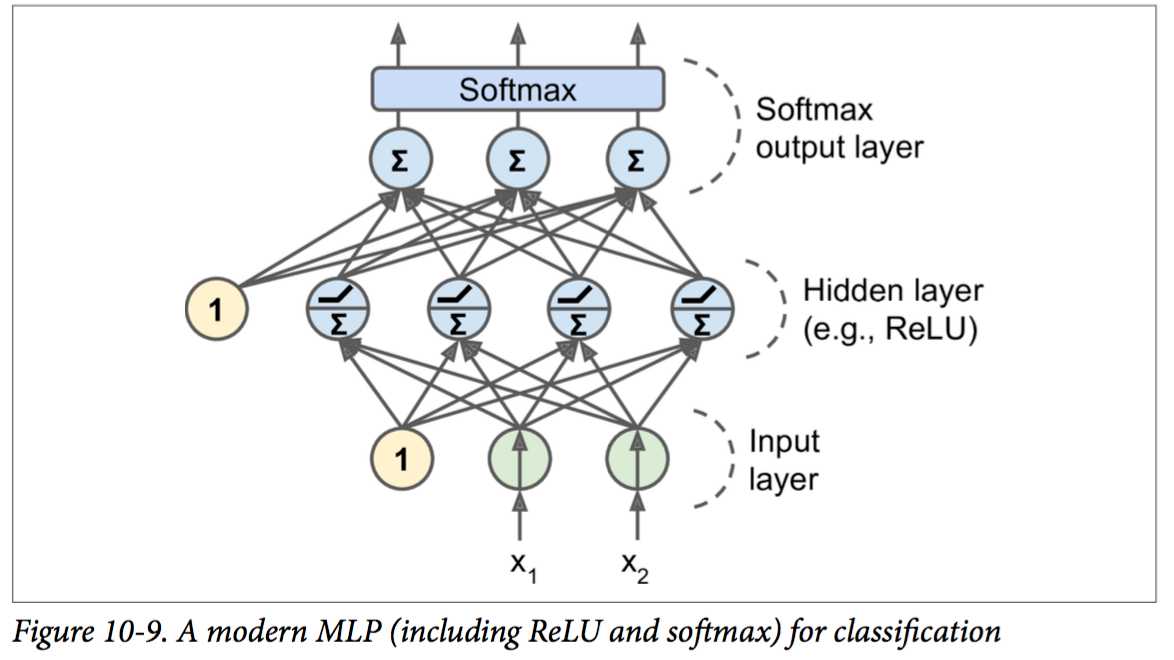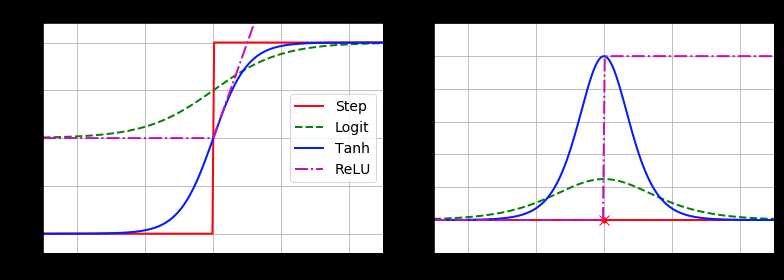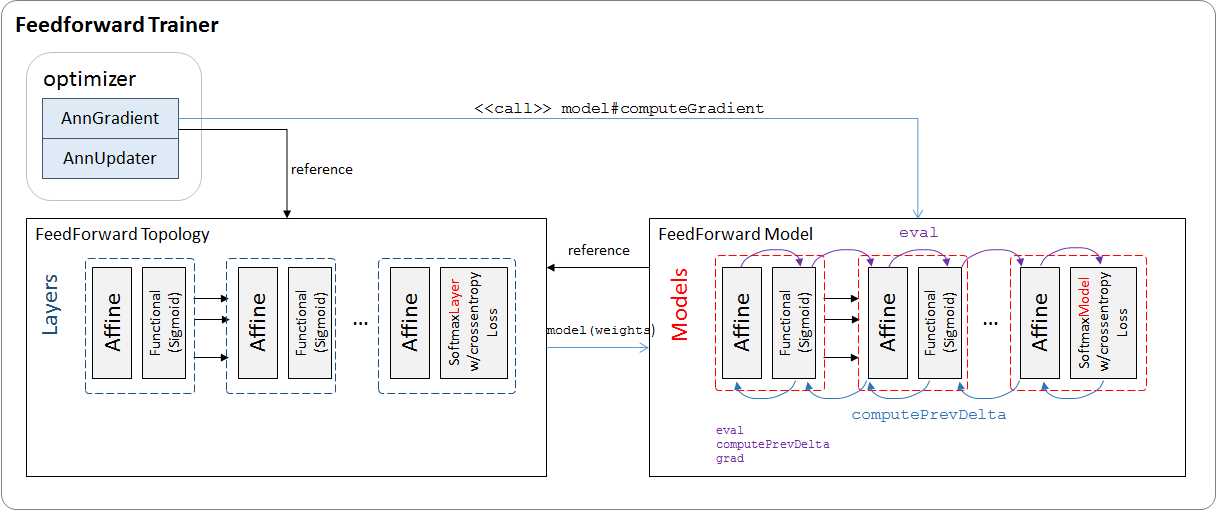标签:cat max 步骤 tput 不同的 lua out int sql
每个node包含两种操作:线性变换(仿射变换)和激发函数(activation function)。

其中仿射变换是通用的,而激发函数可以很多种,如下图。

使用两层(Layer)来对应模型中的一层:
SoftmaxLayerWithCrossEntropyLoss或者SigmoidLayerWithSquaredError;如果是中间层,则使用functionalLayer(new SigmoidFunction()). 目前MLlib只支持sigmoid函数,实际上ReLU激发函数更普遍BP算法计算Gradient的四个步骤:

对照BP算法的步骤,可以发现分隔成Affine和Activation的好处。BP1和BP2中的计算,不同的activation函数有不同的计算形式,将affine变换和activation函数解耦方便组合,进而方便形成各种类型的神经网络。
训练器重要模块如下:

ANN模型中每层对应AffineLayer + FunctionalLayerModel OR SofrmaxLayerModelWIthCrossEntropyLoss
每个LayerModel实现三个函数:eval, computePrevDelta, grad, 作为输出层的SoftmaxLayerModel有些特殊,额外具有LossFunction特性。
可验证affine+activation LayerModel的计算组合跟BP1-4一致。
eval
\(\text{output} = W \cdot \text{input} + b\)
computePrevDelta
\(prev\delta = W * \delta\)
grad
$\dot{W} = input \cdot \delta^l / \text{data size} $
input is \(a^{l-1}\),前一层的激发函数输出
\(\dot{b} = \delta^l / \text{data size}\)
作为affineModel的activation model,只影响prev\(\delta\) 的计算,grad不计算
eval
\(\text{output} = \sigma (\text{input})\)
computePrevDelta
\(\delta :=\delta * \sigma'(\text{input})\)
grad
pass
作为最后一层激发函数,这一层很特殊。
eval
计算参见手写公式。
computePrevDelta
不计算
grad
不计算
loss
计算\(\delta^L\),公式推导参见手写公式,代码如下:
ApplyInPlace(output, target, delta, (o: Double, t: Double) => o - t)返回loss
Softmax输出层的激发函数:
\(a^L_j = \frac{e^{z^L_j}}{\sum_k e^{z^L_k}}\)
计算BP1:\(\delta^L_j = a^L_j -y_j\)

import org.apache.spark.ml.classification.MultilayerPerceptronClassifier
import org.apache.spark.ml.evaluation.MulticlassClassificationEvaluator
import org.apache.spark.ml.linalg.Vectors
import org.apache.spark.sql.{DataFrame, Dataset, Row, SparkSession}
object ann extends App {
val spark = SparkSession
.builder
.appName("ANN for MNIST")
.master("local[3]")
.getOrCreate()
spark.sparkContext.setLogLevel("ERROR")
import spark.implicits._
// Load the data stored in text as a DataFrame.
val dataRdd: DataFrame= spark.sparkContext.textFile("handson-ml/data/train.csv")
.map {
line =>
val linesp = line.split(",")
val linespDouble = linesp.map(f => f.toDouble)
(linespDouble.head, Vectors.dense(linespDouble.takeRight(linespDouble.length - 1)))
}.toDF("label","features")
val data = dataRdd
// Split the data into train and test
val splits: Array[DataFrame] = data.randomSplit(Array(0.6, 0.4), seed = 1234L)
val train: Dataset[Row] = splits(0)
val test: Dataset[Row] = splits(1)
val layers = Array[Int](28*28, 300, 100, 10)
// create the trainer and set its parameters
val trainer = new MultilayerPerceptronClassifier()
.setLayers(layers)
.setBlockSize(128)
.setSeed(1234L)
.setMaxIter(100)
.setLabelCol("label")
.setFeaturesCol("features")
// train the model
val model = trainer.fit(train)
// compute accuracy on the test set
val result = model.transform(test)
val predictionAndLabels = result.select("prediction", "label")
val evaluator = new MulticlassClassificationEvaluator()
.setMetricName("accuracy")
println("Test set accuracy = " + evaluator.evaluate(predictionAndLabels))
}测试集结果精度为96.68%。实际上并不高,同样的数据集使用TensorFlow训练,activation function选择ReLU,同样使用Softmax作为输出,结果可以达到98%以上。Sigmoid函数容易带来vanishing gradients问题,导致学习曲线变平。
标签:cat max 步骤 tput 不同的 lua out int sql
原文地址:http://www.cnblogs.com/luweiseu/p/7843761.html